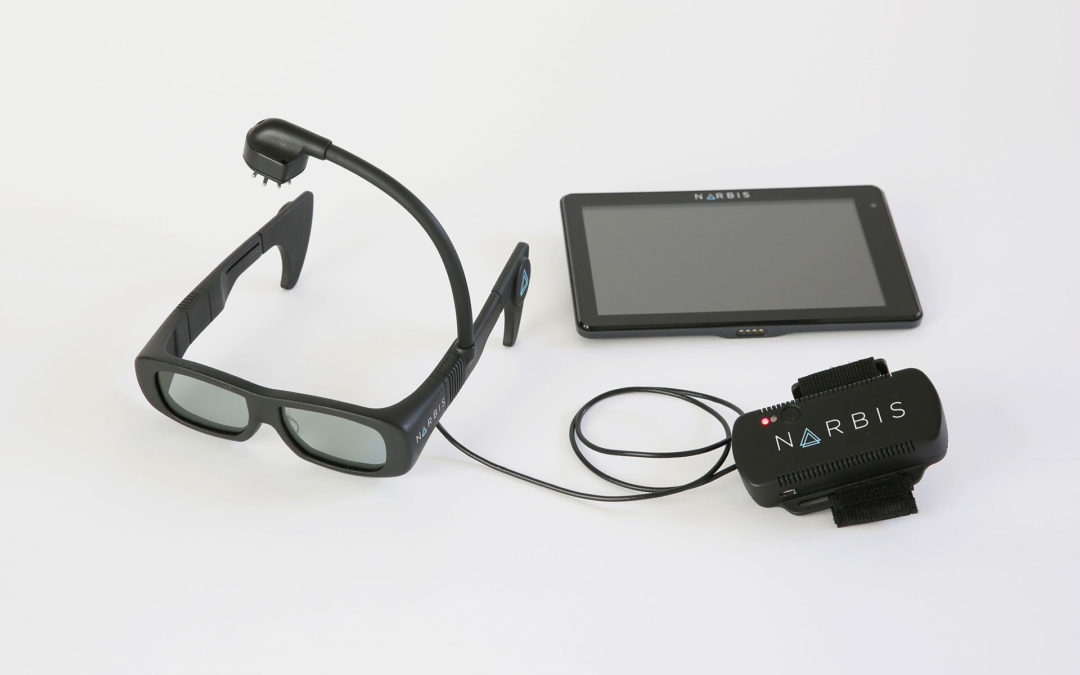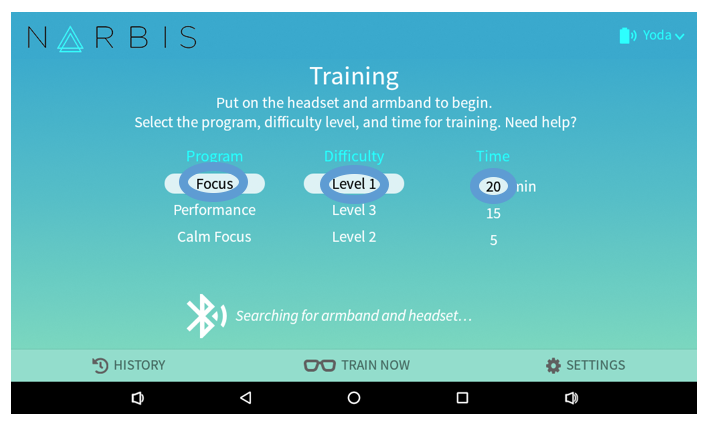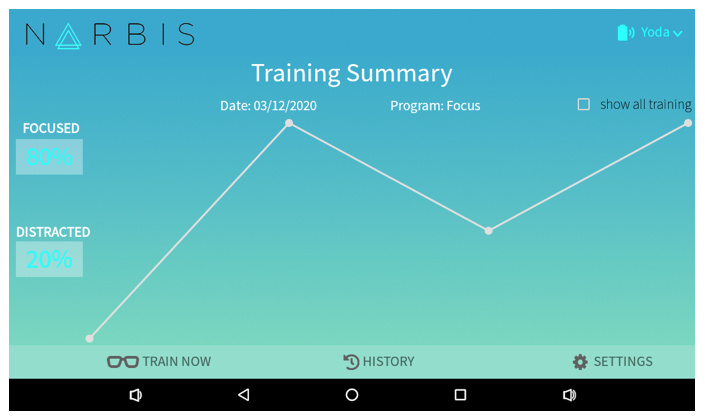Here at Narbis we talk a lot about distraction, focus, and ways to help your brain learn to ignore distractions, including our NASA-patented neurofeedback glasses. Since the product is unlike anything most people have tried before, we wanted to answer some common questions to help our readers better understand what it’s like to use Narbis, and how they can tell it’s working. If you’ve been curious about how this at-home neurofeedback tool works to help you improve your focus and reduce distractions, read on.
- How can you tell that Narbis is working? In other words, how do I interpret the results of my training and how do I know if I’m improving?
After you complete a training, you’ll see a summary displayed on the app that shows your focus percentage and a graph displaying your focus level over the length of your training.
If learning is occuring during the training, you will see that the focus level increases from the beginning to the end of the training. In other words, the line graph will begin at the bottom left of the graph and end at the top right of the graph, showing an upward slope.
Another display available in the Narbis app shows the average focus level for each training that you have completed. Once you notice your focus percent score begins to increase you’ll see your improvement. If using Narbis consistently three to five times a week, most people will notice that their focus scores will begin to increase within a couple of weeks.
- How long should I use Narbis for? (weeks? Months? lifetime?)
Most people will complete a typical neurofeedback training program within 40-60, 30 to 45 minute training sessions. Many of the people included in the Narbis Clinical Pilots dating back to 2015 used Narbis 4 to 5 times a week for 30 minutes for about two months.
Some people who complete a neurofeedback program will retain the benefits over several years, if not longer. Others will continue to use neurofeedback occasionally as “refresher” or “booster” training to keep their edge. The key is to be consistent. Like learning any new skill, practice provides the reinforcement for long-term change. In addition, we go through a variety of experiences in our lives. These “events,” such as reading a book and realizing you don’t recall anything from the previous two pages, might present a solid opportunity for these periodic trainings.
- What are some symptoms of distraction or lack of focus?

Especially this past year, many people have reported feeling foggy or disconnected from their environment; or getting lost in time. Real-life examples realizing after having been driving for a while that you don’t remember how you got to your location, or sitting in a classroom having forgotten the task at hand..
It’s important to recognize that distraction is part of our everyday lives. The difference for those struggling with these challenges is that they cannot seem to control the amount of time they remain in this foggy state or the ability to refocus their attention. In addition, their brains have difficulty prioritizing the information that is essential to completing work, such as a videoconference call, and instead might get distracted by a co-worker’s knuckle cracking or the incessant barking from the neighbor’s dog.
- Is a wandering mind a sign of distraction?
Brief moments of a wandering mind can be very useful, allowing the brain to retrieve a reservoir of creative thought and connect abstract concepts and ideas. The distinction is the amount of time people remain in this state and their control to return to focused attention.
- Is there a limit on how long I should use Narbis?

Most people find that after 40 to 60 trainings, they have reached their “peak” or feel they have plateaued and do not need to continue using neurofeedback regularly after that point. It is not recommended to use Narbis for longer than 60 minutes a day.
- Why are there three different settings (focus, calm focus, performance) and what do they mean? What’s the difference among them, and how do you know on which setting to practice?
All of the Narbis training programs are based on the NASA “engagement index,” which was originally used to monitor the attention of pilots in the cockpit.
Most people interested in practicing attention will use the focus program. The Narbis focus program is identical to the NASA program.
Other people looking to practice relaxation to reduce impulsivity or feelings of anxiousness, as well as practice attention, will use the calm focus program.
Lastly, those interested in honing their concentration edge — be it for sports, music, or work performance —- will use the peak performance program.
- What are signs that your focus/calm focus/performance is improving?
Improvements may seem subtle at first. In fact, you may notice and reflect on these positive changes after they happen. You may find that you completed a task in far less time than in the past, read and understood material the first time, or found yourself immersed in conversation without your mind wandering.
You may find that you are able to remember facts you previously struggled to recall. Others will begin noticing that you seem sharper and more present. Also, there is a common domino effect to these changes. Little, seemingly insignificant, differences become more dramatic over time. This can lead to true accomplishment and feelings of success —- being “in the zone.”
Paying attention and remaining calm should be automatic and seamless. Narbis is the tool that helps you to practice these states at will. It will give you the ability to sustain concentration for longer periods of time while ignoring distractions. Some people may also find improved memory and recall, as well as other improvements in executive functioning.
- For kids who complain that using Narbis makes it difficult to read or concentrate on their homework, what can parents say to convince them that the Narbis smart glasses are actually helping them?
Learning a skill is a “trial and error” process that can be challenging at first. Like learning to ride a bike, the feedback of falling teaches us how to balance, which over time, becomes easy and effortless. Most people who use Narbis will find that Narbis actually makes it easier to concentrate: Each time their mind wanders, the glasses instantly change tint, giving the cue to get back on task.
For some people, this may take a few trainings and consistent practice to find their flow while wearing Narbis. Others might find their flow instantly.
It is important for parents to remind their children that it is normal for their mind to wander while doing activities; Narbis is simply helping them become more aware of how their brain is working by giving instant feedback on their focus.
As the glasses change tint when the mind wanders, it may feel a little strange at first.ut with some practice, most people forget they are wearing Narbis and find themselves in a blissful, focused flow state. And that’s a good state to be in.










